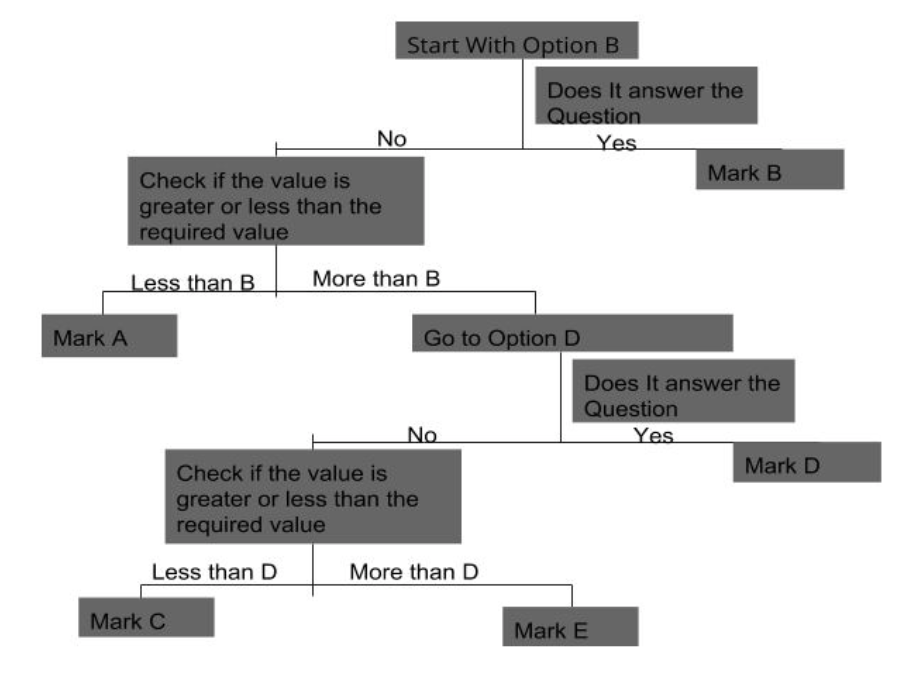On GMAT and GRE, the problem solving question can get quite tricky. They could trap you putting you on a loop of time-wasting calculations, or sending you on a spiral with the increasingly complicated computation steps. To avoid these traps, it is essential to use a strategic approach to solve these tricky problem solving question types.
Using Answer options to solve complex, time consuming Problem Solving Questions
In this strategy article we will discuss how you can work from the answer options to make strategic decisions on quantitative reasoning questions that have…
- Numerical Answer Choices.
- Only one of the choices is the right one.
- Have five answer choices.
- The options are in the increasing order from A to E.
These types of questions are fairly common in many exams such as GRE and GMAT. Let’s understand this strategy with an illustrative example.
Illustrative Example
Today Richard, who is 34 years old, and his son, who is 8 years old, celebrate their birthdays. How many years will pass before Richard’s age is twice his son’s age?
A. 10 B. 14 C. 18 D. 22 E. 26
Let’s solve this problem solving question using answer options

Let’s try this out
If we start with option B we get that Richard’s age is 48 and twice of his son’s age is 44 ( which should have been equal), therefore it seems we need to increase the value of the age difference.
So Neither B nor anything less than the value of B can be an answer. Eliminate Options A and B.
Next we move to D. At option D we notice that Richard’s age is 56 whereas twice of his son’s age in 60, i.e. we have gone too far and we need to reduce the number of years; thus we can be sure that D and values more than D would not be the answer. Eliminate option D and E.
It must logically follow that C is the correct answer. And it is as only C satisfies our criteria.
Solution Check with option C
To be sure that we got the correct answer, we can check the answer. Richard’s age after 18 years = 52
Richard’s son’s age after 18 years = 26
26 X 2 = 52
That was the condition in the question.
Try out a few more questions from the official guide to test this method. Let us know how it went.
Now would be a good time to test your quantitative reasoning acumen with the GMAT / GRE Quantitative reasoning mini-test.
